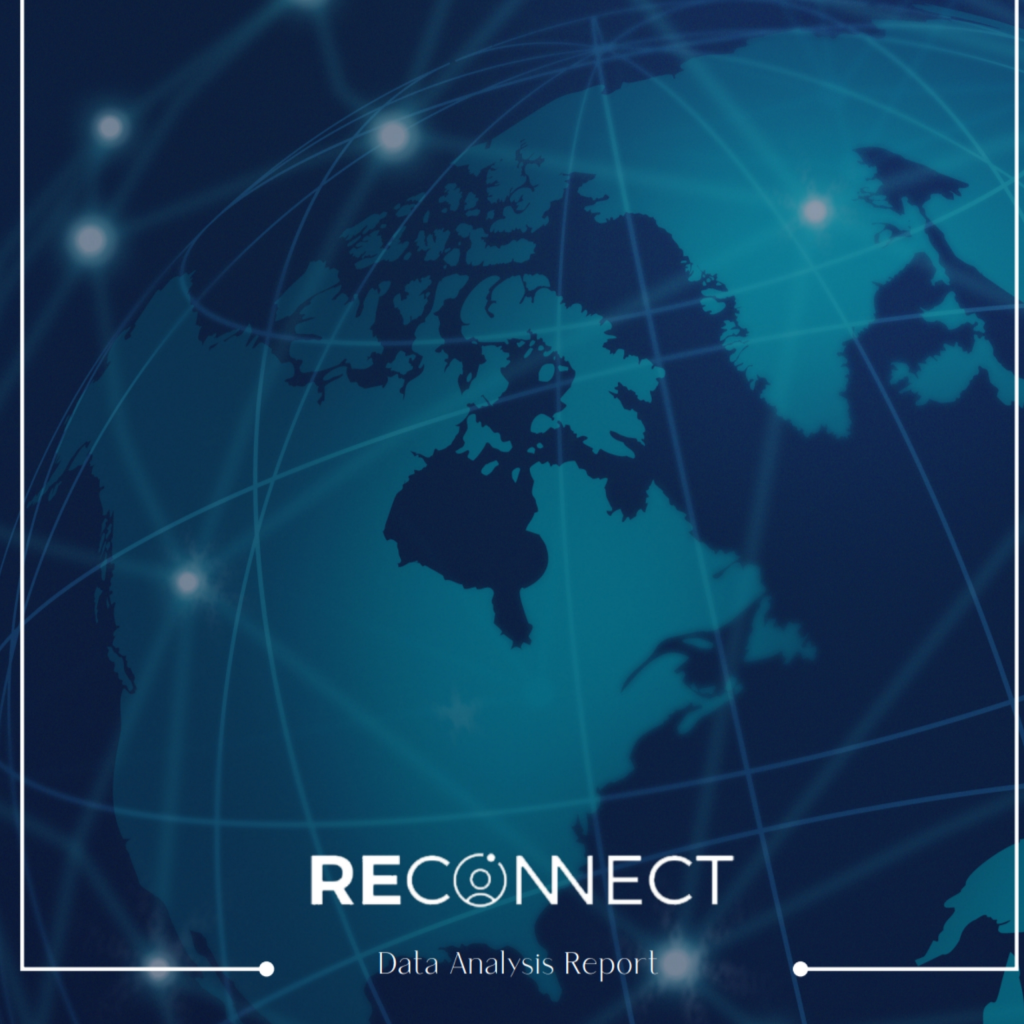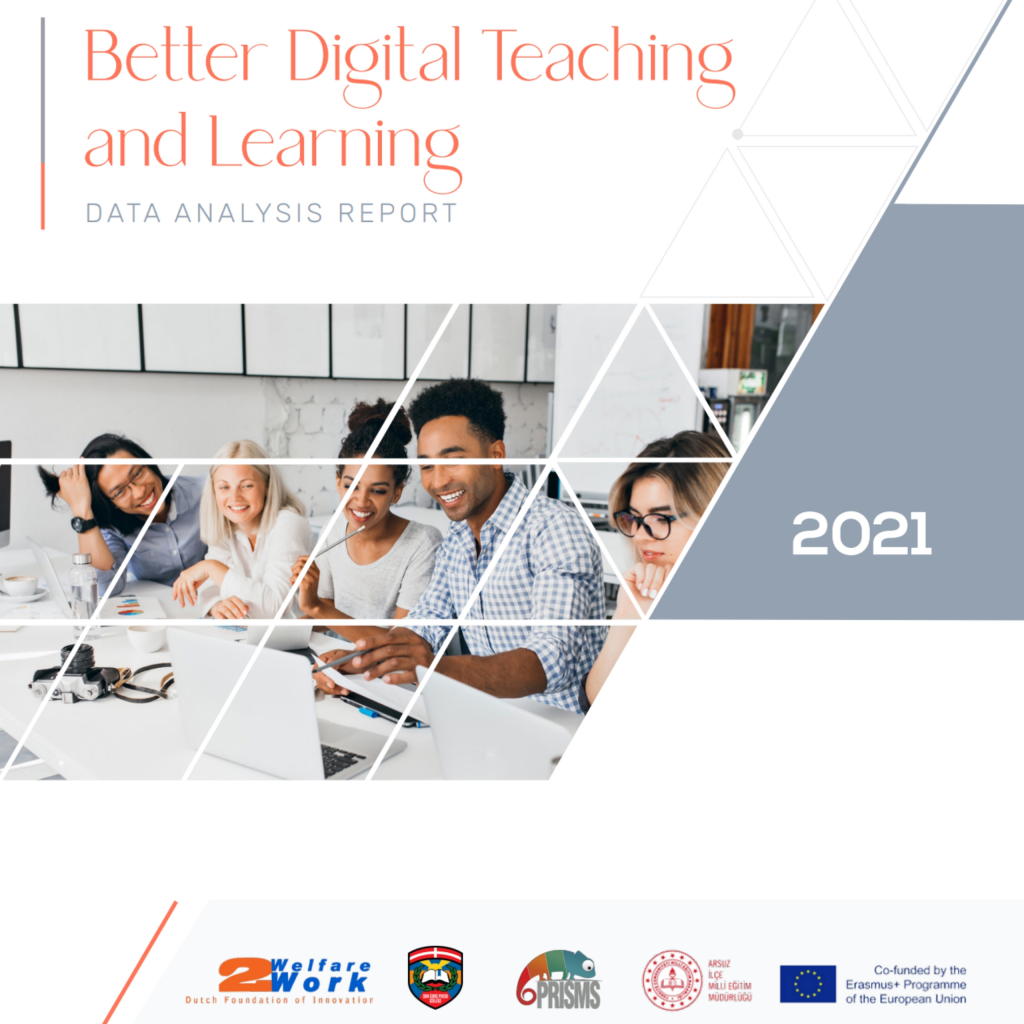ReConnect – Better Digital Teaching and Learning

The ReConnect data analysis has the aim to develop a new pedagogical approach. The ReConnect data has been collected through two methods of inquiry; focus groups and questionnaires. The quantitative data analysis steps we have done are data validation, data editing and data coding. Our conclusion is that the questions in the questionnaires and focus groups are valid. On the basis of the Data Analysis outcomes our recommendation would be to firstly develop a blended pilot training with emphasis on digital teaching and learning for the students and than make the train the trainer training.
Author: Pieter van Schie – Dutch Foundation of Innovation Welfare 2 Work
ReConnect – A new Pedagogical Approach
The ReConnect data analysis has the aim to develop a new pedagogical approach:
1. To make better use of digital technology for teaching and learning;
2. To develop relevant digital competencies and skills for the digital transformation; and
3. To increase students’ media literacy
The ReConnect data has been collected through two methods of inquiry; focus groups and questionnaires. The quantitative data analysis steps we have done are data validation, data editing and data coding. Our conclusion is that the questions in the questionnaires and focus groups are valid. In general, the questions and follow up questions were done consistently. All respondents were chosen according the criteria and the procedures were fully followed and we are confident that the patterns and conclusions of our data analysis are valid. We did not find any errors in data editing. After identifying the patterns and connections we have identified the themes, looking for the most common responses to the questions, and identified the patterns which answers the ReConnect project questions.
Learning Styles
The classroom environment is initially a good place to start up the pilot ReConnect training/workshop. This should be a blended approach which will cover the 3 learning styles;
- Visual (visual, image, reading, writing)
- Auditory (hearing)
- Kinesthetic (feeling, doing)
| 65% | of the students learn through a visual style, |
| 30% | are auditory learners |
| 5% | are kinesthetic |

It is clear that both teacher and student find that using more internet and digital tools in classroom environment is a good development and is also enjoyable. Teachers are prepared to use online tools and actually already use them as support teaching tools.
The term reality is a bit diffused as regards to the meaning as we know the learning style from each student differs. Thus, it is important that we keep in mind the different learning styles. Furthermore, for many students, most of the time, reality is the smartphone. Thus, one of our remarks here would also be that this area needs to be explored further when we go into this direction: The social media usage, the use of smartphone of the target groups (teachers and students) must be upgraded for both categories to a more professional level and is maybe very interesting and appropriate when we are going to teach through smartphones.
Following up the data analysis, our recommendation would be to firstly develop a blended pilot training with emphasis on digital teaching and learning for the students and then make the Train-the-Trainer Course. The pilot training should have more emphasis on the internet and digital tools and we should take into consideration that we could make more use of the smart phone of the student. The current class room situation is a good point to start digital teaching. The morning suits best as the most appropriate time to learn for most students (although it would be very handy that the pilot would be accessible during each moment of the day (rewind).
The pilot should have elements of ‘working alone’, but also in ‘groups’. Elements of practice by doing needs to be included (leaving the actual class room) as well. Fact-checking is an important component when we
use the internet and this should be included as part of the pilot approach as well. The visual and auditory
nature of videos appeal to a wide audience and allows each student to process information in a way that’s
natural: videos are good teachers, but a teacher cannot be replaced in our opinion. The teacher is very
important to moderate and to be a bridge with the use of the online tools.
The pilot must be attractive and engaging. Science and social studies were mentioned as most liked lessons. This is a good to know fact and can be a starting point when adding ‘more fun’(with a more funny presentation, adding cartoons, jokes and/or using storytelling, or some kind of technology – e.g. virtual glasses, an app) and/ or practice by doing, experiments, excursions and team work in place. Playing (educational) games or online tests was also mentioned as a good support tool. It is important to ensure that with the created content, the teacher has enough time to give attention to his/her students and to prepare a ‘good lesson’. The teachers are prepared to improve themselves and upgrade their digital skills. This is needed as well to make ‘technology’ and ‘online teaching’ work and support their students appropriately. Finally, it is important to note that it does not matter which approach / learning style it is implemented as long as it is ensured that the teachers have enough time (for preparation and implementation) and that the class size is doable as well. Also, it is important that students and teachers are facilitated (the use of smart
phone can solve this). It would be very handy that the pilot would be accessible during each moment of the day (rewind / replay), when not consumed live. A Train the Trainer Course must be the follow up for the teachers to help them be more digital savvy and equip them to make the digital teaching / ‘online teaching’ work. Last but not least it is very important that making (digital) mistakes is normalized:
| First | |
| Attempt | |
| In | |
| Learning! |

Recommendation: Blended Learning
Our recommendation would be to firstly develop a blended pilot training with emphasis on digital teaching and learning for the students and than make the train the trainer training.

